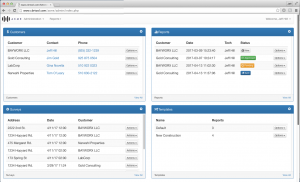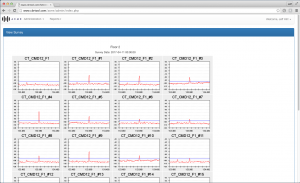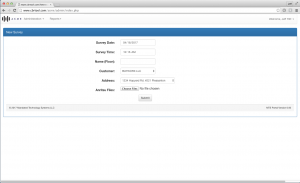Process Automation du jour…
I recently finished a really interesting, fun, process automation project for a new client: Mandated Technology Systems. Mandated Technology Systems is a new startup focused on solving burdensome, manual processes for the Electrical / Building industry.
They came to us to help automate the process of building a report for Anritsu™ Spectrum Analyzer site surveys. Not only did we automate the reporting process, but we built a cloud-based product that has become their flagship product offering. I promise not to go too far out into the weeds in the description, but this was a really nice solution, after a few iterations. Actually, I really wish all of my projects had this level of challenge. The workflow is actually pretty simple:
- Technician takes the Anritsu™ Spectrum Analyzer on-site to a building and takes 20 readings per floor.
- Technician logs into the portal (even from the building site) and creates a new survey, with location info. All metadata is automatically pulled from the .SPA files that come out of the spectrum analyzer (center frequency, spread, start frequency, end frequency, etc).
- .SPA files are uploaded to a unique folder on the portal and instantly rendered into individual .png files.
- Site Location, Client, Date, Time, FCC License, Floorplan, etc are all automatically collated into an editable report.
- Tech or admin enters the site survey summary and once they are happy with it, they can automatically generate a pdf and send it (via the portal) to the client.

Dashboard

Survey

Add Survey
The fun part is that step 1 takes about 100x longer than all the subsequent steps combined. What normally took about a week of back-and-forth, editing, tweaking and downloading, embedding and saving images is now pretty much a 1 minute process. Since the client, location and survey data is pulled directly from the database and data files, there is virtually no chance of human error in the heat of the battle. Cracking the code inside the .spa files and using open-source software to dynamically and quickly generate visual data based on dB readings in a proprietary format was the real home-run in this project (say that 3x quickly). Listening to the client explain the problem in detail and asking the right questions led to a very successful rollout.
If you have an idea for a project, please contact us! We would love to help grow your idea.